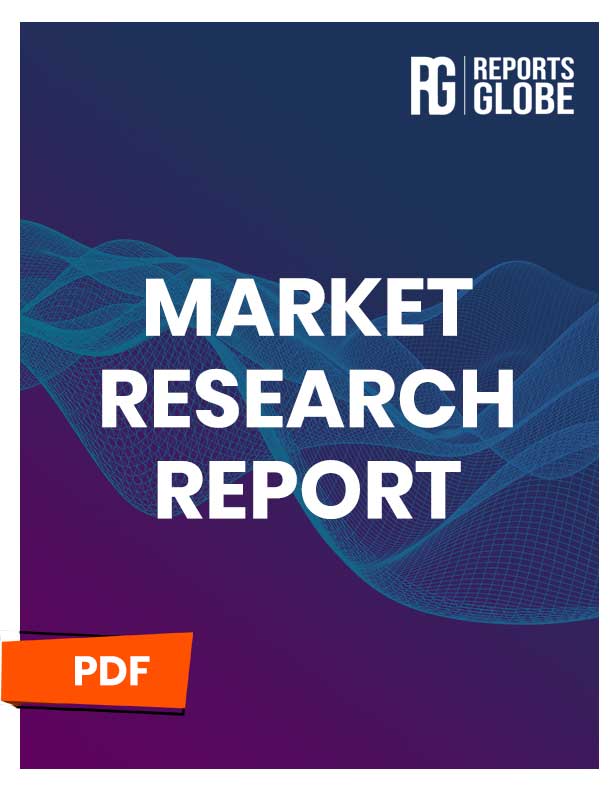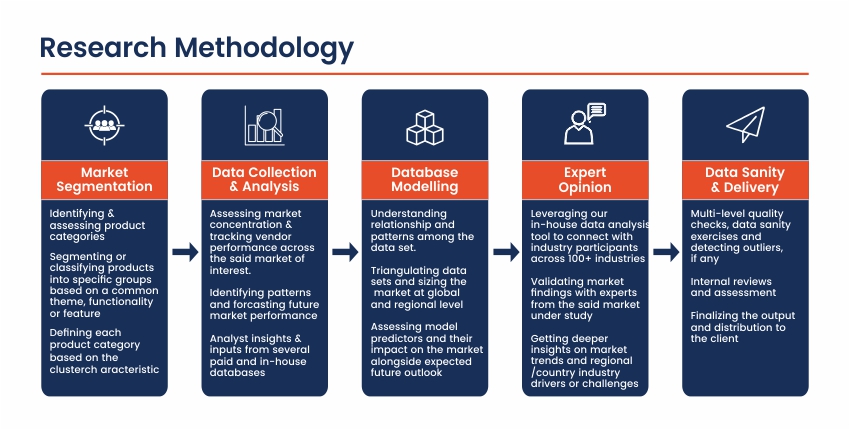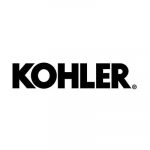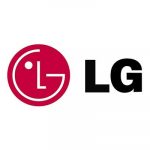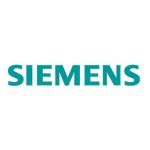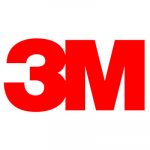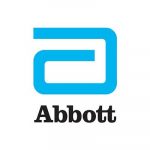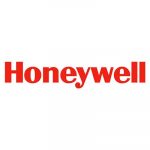Market Overview
The Europe Thermoset Molding Compound Market has experienced significant growth in recent years, driven by the increasing demand for these versatile and high-performance materials across various industries, including automotive, electrical and electronics, and construction. Thermoset molding compounds are a class of polymeric materials that undergo an irreversible chemical reaction during the molding process, resulting in a rigid and durable structure that is resistant to heat, chemicals, and mechanical stress.
The market in Europe encompasses a diverse array of thermoset molding compounds, including phenolic, polyester, epoxy, and others, each with its own unique properties and applications. These materials play a crucial role in the production of a wide range of products, from automotive parts and electrical components to construction materials and industrial equipment, contributing to the overall quality, durability, and performance of the final products.
As the European manufacturing sector continues to evolve and the demand for innovative and sustainable solutions increases, the Thermoset Molding Compound Market has become an integral part of the regional materials industry. The market’s growth is driven by the increasing adoption of these materials in various end-use industries, as well as the ongoing research and development efforts to address environmental concerns and regulatory changes.
This dynamic market presents significant opportunities for material manufacturers, molding companies, and end-use industries to collaborate and drive innovation in the field of thermoset molding compounds, ultimately supporting the transformation of the European economy towards more efficient and sustainable practices.
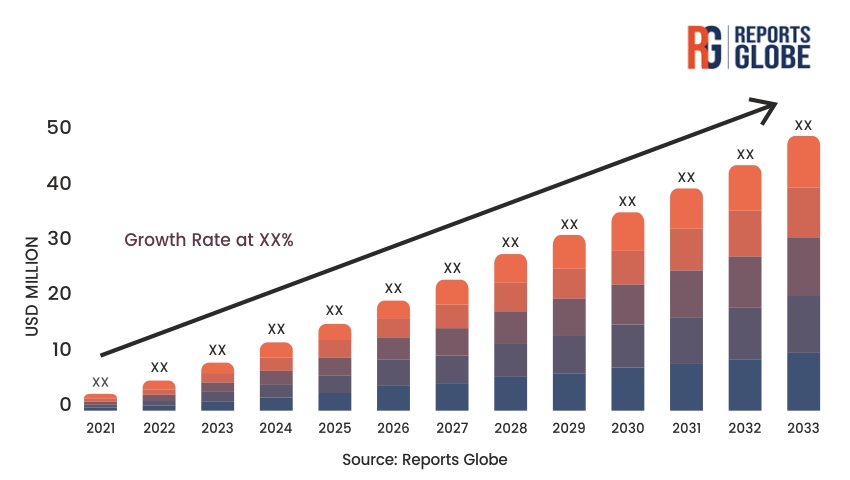
Key Takeaways of the Market
- Rapid growth of the Europe Thermoset Molding Compound Market, driven by the increasing demand for these versatile and high-performance materials across various industries
- Diverse range of thermoset molding compounds, including phenolic, polyester, epoxy, and others, each with unique properties and applications
- Wide-ranging applications of thermoset molding compounds, from automotive parts and electrical components to construction materials and industrial equipment
- Increasing emphasis on environmental sustainability and the development of more eco-friendly thermoset molding compound solutions
- Challenges related to the potential environmental and health impacts of certain thermoset molding compounds, as well as the need for cost-effective production and compliance with stringent regulations
- Collaborative efforts between material manufacturers, molding companies, and end-use industries to address the evolving market dynamics and develop innovative applications for thermoset molding compounds
Market Drivers
The Europe Thermoset Molding Compound Market is primarily driven by the increasing demand for these versatile and high-performance materials across a wide range of industries, including automotive, electrical and electronics, construction, and industrial equipment.
The continued growth of the European manufacturing sector has been a significant driver for the market. Thermoset molding compounds are widely used in the production of a variety of components and parts, providing enhanced durability, thermal resistance, and dimensional stability that are essential in many industrial and consumer applications.
Furthermore, the increasing adoption of thermoset molding compounds in the electrical and electronics industry has been another crucial driver for the market. These materials are valued for their excellent insulating properties, flame retardancy, and ability to withstand harsh environmental conditions, making them essential in the manufacturing of various electrical components, printed circuit boards, and enclosures.
Additionally, the rising demand for sustainable and eco-friendly solutions has led to the development of new applications for thermoset molding compounds, particularly in the areas of construction and transportation. As regulatory bodies and end-users seek to address environmental concerns and reduce the carbon footprint of various products, the use of more environmentally friendly thermoset molding compounds has gained traction, driving the market’s growth.
The ongoing research and development efforts by material manufacturers to optimize the production processes, improve the environmental profile, and expand the applications of thermoset molding compounds have also been instrumental in fueling the market’s expansion in Europe.
Market Restraints
Despite the promising growth of the Europe Thermoset Molding Compound Market, there are several restraints that continue to challenge the industry.
One of the primary restraints is the growing environmental and health concerns associated with certain thermoset molding compounds, particularly those containing hazardous chemicals or additives. These concerns have led to increased regulatory scrutiny and the potential for stricter restrictions or bans on the use of specific thermoset materials in various applications.
The potential health and environmental impacts of certain thermoset molding compounds, as well as their potential to contribute to waste and pollution, have raised significant sustainability-related issues. The need to address these concerns and develop more environmentally friendly alternatives has created a challenging landscape for material manufacturers and end-use industries.
Additionally, the cost-effective production of thermoset molding compounds can be a restraint, as the specialized manufacturing processes and the use of specialized materials can add to the overall production costs. This, in turn, can impact the competitiveness of these materials in certain price-sensitive applications and markets.
Furthermore, the complex and evolving regulatory landscape surrounding the use of thermoset molding compounds, with varying requirements and restrictions across different European countries, can pose a challenge for manufacturers and molding companies. Ensuring compliance with these regulations and adapting to changes in the regulatory environment can add significant complexity and cost to the industry.
The potential for supply chain disruptions, raw material availability, and fluctuations in energy and feedstock prices can also act as restraints, affecting the overall market dynamics and the ability of manufacturers to maintain consistent product supply and pricing.
Market Opportunity
The Europe Thermoset Molding Compound Market presents numerous opportunities for growth and innovation. As the demand for these versatile and high-performance materials continues to rise, and the need for sustainable and eco-friendly solutions increases, there are several avenues for market expansion and the development of transformative technologies.
One key opportunity lies in the development of new and improved thermoset molding compound formulations that address the environmental and health concerns associated with certain materials. Material manufacturers can focus on the research and development of thermoset compounds with enhanced biodegradability, reduced toxicity, and improved environmental profiles, catering to the growing demand for sustainable and responsible chemical solutions.
Furthermore, the exploration of new applications for thermoset molding compounds, beyond their traditional use in automotive, electrical, and construction industries, presents another significant opportunity. Emerging sectors, such as renewable energy, medical devices, and aerospace, may offer untapped potential for the utilization of these versatile materials, driving further market diversification and growth.
Additionally, the integration of advanced technologies, such as additive manufacturing, nanotechnology, and advanced materials science, can create opportunities for improving the overall performance, customization, and sustainability of thermoset molding compounds. These innovations can not only address environmental concerns but also enhance the competitiveness of these materials in the marketplace.
The potential for collaboration between material manufacturers, molding companies, and end-use industries to develop innovative and tailored thermoset molding compound solutions can also contribute to the growth of the Europe Thermoset Molding Compound Market. Such collaborative efforts can lead to the creation of more specialized and customized products that better meet the needs of various applications and industries.
Moreover, the expansion of the thermoset molding compound market into emerging economies and developing regions within Europe can present additional growth opportunities, as the industrial and manufacturing sectors in these areas continue to expand and evolve.
Market Segment Analysis
Two key segments within the Europe Thermoset Molding Compound Market are the phenolic and the epoxy segments.
The phenolic segment has experienced significant growth, driven by the widespread use of these materials in a variety of applications, including automotive, electrical, and construction. Phenolic thermoset molding compounds are valued for their excellent heat and chemical resistance, as well as their ability to provide dimensional stability and flame retardancy to the final products.
The demand for phenolic thermoset molding compounds has been particularly strong in the automotive industry, where these materials are used in the production of engine components, brake parts, and electrical housings. Additionally, the construction and electrical/electronics sectors have also been significant contributors to the growth of the phenolic segment.
The epoxy segment has also gained traction, as these thermoset molding compounds offer superior mechanical properties, chemical resistance, and adhesion characteristics. Epoxy thermoset molding compounds are widely used in the manufacturing of printed circuit boards, aerospace components, and high-performance industrial equipment, where their unique properties are essential in enhancing the overall performance and durability of the final products.
The demand for epoxy thermoset molding compounds has been driven by the increasing emphasis on product quality, reliability, and safety in various end-use industries, as well as the ongoing efforts to develop more environmentally friendly epoxy formulations to address sustainability concerns.
Both the phenolic and epoxy segments are characterized by ongoing research and development, as manufacturers strive to optimize the performance, environmental profile, and cost-effectiveness of their thermoset molding compound offerings to address the evolving market dynamics and regulatory landscape.
Regional Analysis
The Europe Thermoset Molding Compound Market exhibits a diverse landscape, with varying levels of market maturity and adoption patterns across different regions.
Western European countries, such as Germany, the United Kingdom, and France, have emerged as the leading markets for thermoset molding compounds. These regions have well-established manufacturing sectors, robust chemical industries, and favorable regulatory environments that have facilitated the widespread adoption of these versatile materials.
The presence of major material manufacturers, specialized molding companies, and end-use industries has contributed to the growth of the Thermoset Molding Compound Market in Western Europe. Additionally, the region’s focus on sustainability and the development of eco-friendly solutions have influenced the market dynamics, driving the demand for more environmentally friendly thermoset molding compound variants.
In contrast, Eastern European countries have generally lagged behind in the adoption of thermoset molding compounds, primarily due to their less-developed industrial and manufacturing landscapes, as well as the potential challenges in ensuring compliance with increasingly stringent environmental regulations.
However, as the overall emphasis on sustainable and responsible materials solutions continues to grow across the European continent, the demand for innovative and environmentally friendly thermoset molding compound products is expected to increase in these regions as well.
Factors such as the availability of raw materials, the level of industrial activity, the regulatory frameworks governing the use of thermoset molding compounds, and the regional focus on sustainability play a crucial role in shaping the dynamics of the Europe Thermoset Molding Compound Market. Material manufacturers, molding companies, and end-use industries will need to navigate these regional nuances and tailor their strategies accordingly to capitalize on the growth opportunities within the broader European market.
Competitive Analysis
The Europe Thermoset Molding Compound Market is characterized by a competitive landscape, with the presence of both global material manufacturers and specialized regional players.
Prominent global players, such as Hexion, Huntsman Corporation, and Hitachi Chemical Company, have established a strong foothold in the market. These companies leverage their extensive research and development capabilities, broad product portfolios, and established distribution networks to offer a wide range of thermoset molding compound solutions, catering to the diverse needs of end-use industries.
Alongside the global players, the market has also witnessed the emergence of specialized regional and local chemical companies that have focused on developing innovative and tailored thermoset molding compound formulations. Companies like Knocom Polymers, Polimeri Europa, and Sumitomo Bakelite Europe have gained traction by offering products that address the specific requirements of their regional markets and comply with evolving regulatory standards.
The competitive landscape is further shaped by strategic collaborations and partnerships between material manufacturers, molding companies, and end-use industries. These alliances enable the integration of complementary capabilities, the sharing of technical expertise, and the co-development of advanced thermoset molding compound solutions that address the evolving needs of the European market.
Moreover, the market has also seen the entry of smaller, agile players and start-ups that are leveraging emerging technologies, such as additive manufacturing, nanotechnology, and advanced materials science, to develop innovative and sustainable thermoset molding compound offerings. These innovative companies contribute to the diversification of the competitive landscape and the potential for transformative solutions in the market.
Key Industry Developments
- Ongoing research and development efforts to create more environmentally friendly and sustainable thermoset molding compound formulations, addressing the concerns related to toxicity and environmental impact
- Expansion of thermoset molding compound applications beyond traditional industries, such as exploring new uses in renewable energy, medical devices, and aerospace
- Integration of advanced technologies, including additive manufacturing, nanotechnology, and advanced materials science, to improve the overall performance, customization, and sustainability of thermoset molding compounds
- Collaborative initiatives between material manufacturers, molding companies, and end-use industries to develop innovative and tailored thermoset molding compound solutions that meet the evolving market demands
- Increased focus on regulatory compliance and adaptation to the changing landscape of environmental regulations governing the use of thermoset molding compounds in various applications
- Expansion of thermoset molding compound market presence in emerging economies and developing regions within Europe, as the industrial and manufacturing sectors in these areas continue to grow
- Ongoing efforts to address the challenges related to cost-effective production, raw material availability, and supply chain disruptions in the thermoset molding compounds industry
Future Outlook
The future outlook for the Europe Thermoset Molding Compound Market remains highly promising, with the industry poised for continued growth and the introduction of more sustainable and innovative solutions. Several key factors contribute to this positive trajectory:
- Sustained Demand from Manufacturing Sectors: The ongoing growth and evolution of the European manufacturing and industrial landscape will maintain the demand for thermoset molding compounds as essential high-performance materials.
- Emphasis on Eco-Friendly and Sustainable Solutions: The increasing focus on environmental protection, regulatory changes, and the need for responsible materials practices will drive the development of more sustainable thermoset molding compound formulations and applications.
- Technological Advancements and Material Innovation: The integration of emerging technologies, such as additive manufacturing, nanotechnology, and advanced materials science, will enable the creation of more efficient, customized, and environmentally friendly thermoset molding compound solutions.
- Collaborative Ecosystem and Innovation: The strengthening of collaborative networks and partnerships between material manufacturers, molding companies, and end-use industries will facilitate the development and deployment of innovative thermoset molding compound solutions that address the evolving market demands.
- Expansion into Emerging Markets: The growth of industrial and manufacturing sectors in developing regions within Europe will present new opportunities for the thermoset molding compound market to expand its reach and diversify its customer base.
As the Europe Thermoset Molding Compound Market continues to evolve, material manufacturers, molding companies, and industry stakeholders will need to remain agile, innovative, and customer-centric in their approach. By leveraging the emerging trends, addressing the existing challenges, and fostering a robust collaborative ecosystem, the market is poised to play a pivotal role in supporting the transformation of the European economy towards more sustainable and efficient practices, while maintaining the versatility and performance of these essential materials.
Market Segmentation
The Europe Thermoset Molding Compound Market can be segmented based on the following criteria:
Product Type:
- Phenolic Thermoset Molding Compounds
- Epoxy Thermoset Molding Compounds
- Polyester Thermoset Molding Compounds
- Polyurethane Thermoset Molding Compounds
- Other Thermoset Molding Compounds (Silicone, BMI, etc.)
Application:
- Automotive
- Electrical and Electronics
- Construction
- Industrial Equipment
- Aerospace and Defense
- Renewable Energy
- Medical Devices
- Other Applications
End-Use Industry:
- Automotive Manufacturing
- Electrical and Electronics Manufacturing
- Construction and Infrastructure
- Industrial Equipment Manufacturing
- Aerospace and Defense
- Renewable Energy
- Medical Device Manufacturing
- Other Industrial Sectors

